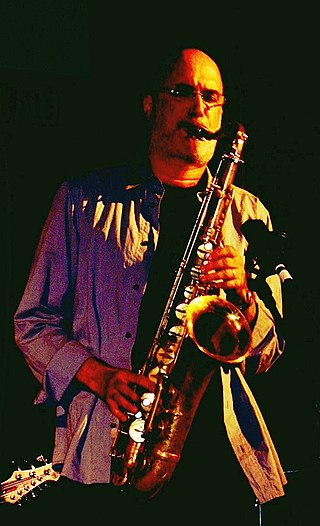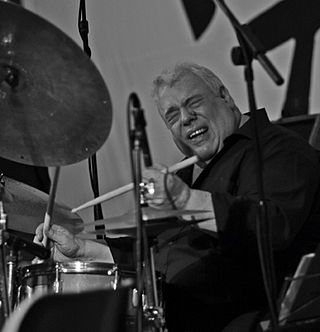The following musicians are professional Jazz banjoists:
Porter Brown

Eddie Lang was an American musician who is credited as the father of jazz guitar. During the 1920s, he gave the guitar a prominence it previously lacked as a solo instrument, as part of a band or orchestra, and as accompaniment for vocalists. He recorded duets with guitarists Lonnie Johnson and Carl Kress and jazz violinist Joe Venuti, and played rhythm guitar in the Paul Whiteman Orchestra and was the favoured accompanist of Bing Crosby.

Michael Leonard Brecker was an American jazz saxophonist and composer. He was awarded 15 Grammy Awards as a performer and composer, received an honorary doctorate from Berklee College of Music in 2004, and was inducted into the DownBeat Jazz Hall of Fame in 2007.
The National Endowment for the Arts (NEA), every year honors up to seven jazz musicians with Jazz Master Awards. The National Endowment for the Arts Jazz Masters Fellowships are the self-proclaimed highest honors that the United States bestows upon jazz musicians. The award is usually given late in a performer's career after they have long established themselves.
The following is a list of players and managers (*), both past and current, who appeared at least in one regular season game for the Chicago White Sox franchise.

Dave Tough was an American jazz drummer associated with Dixieland and swing jazz in the 1930s and 1940s.

Martin Drew was an English jazz drummer who played with Ronnie Scott between 1975 and 1995 and with Oscar Peterson between 1974 and 2007.
The Metronome All-Stars were a collection of jazz musicians assembled for studio recordings by Metronome Magazine, based on its readers' polls. The studio sessions were held in the years 1939–42, 1946–53, and 1956, and typically consisted of two tracks which allowed each participant a chance to solo for one chorus. Earlier recordings feature more swing style, while the later sessions tend more toward bebop.
Wendell Marshall was an American jazz double-bassist.

In the early 1940s in jazz, bebop emerged, led by Charlie Parker, Dizzy Gillespie, Thelonious Monk and others. It helped to shift jazz from danceable popular music towards a more challenging "musician's music." Differing greatly from swing, early bebop divorced itself from dance music, establishing itself more as an art form but lessening its potential popular and commercial value. Since bebop was meant to be listened to, not danced to, it used faster tempos. Beboppers introduced new forms of chromaticism and dissonance into jazz; the dissonant tritone interval became the "most important interval of bebop" and players engaged in a more abstracted form of chord-based improvisation which used "passing" chords, substitute chords, and altered chords. The style of drumming shifted as well to a more elusive and explosive style, in which the ride cymbal was used to keep time, while the snare and bass drum were used for accents. This appealed to a more specialized audiences than earlier forms of jazz, with sophisticated harmonies, fast tempos and often virtuoso musicianship. Bebop musicians often used 1930s standards, especially those from Broadway musicals, as part of their repertoire. Among standards written by bebop musicians are Gillespie's "Salt Peanuts" (1941) and "A Night in Tunisia" (1942), Parker's "Anthropology" (1946), "Yardbird Suite" (1946) and "Scrapple from the Apple" (1947), and Monk's "'Round Midnight" (1944), which is currently the most recorded jazz standard composed by a jazz musician. An early 1940s style known as "jumping the blues" or jump blues used small combos, uptempo music, and blues chord progressions. Jump blues drew on boogie-woogie from the 1930s. Kansas City Jazz in the 1930s as exemplified by tenor saxophonist Lester Young marked the transition from big bands to the bebop influence of the 1940s. These divergences from the jazz mainstream of the time initially met with a divided, sometimes hostile response among fans and fellow musicians, especially established swing players, who bristled at the new harmonic sounds. To hostile critics, bebop seemed to be filled with "racing, nervous phrases". Despite the initial friction, by the 1950s bebop had become an accepted part of the jazz vocabulary. The most influential bebop musicians included saxophonist Charlie Parker, pianists Bud Powell and Thelonious Monk, trumpeters Dizzy Gillespie and Clifford Brown, and drummer Max Roach.
The Big Band and Jazz Hall of Fame is part of a US-based non-profit organization that began operations in 1978 and continues to the present (2022) in San Diego County, California. David Larkin is current president.